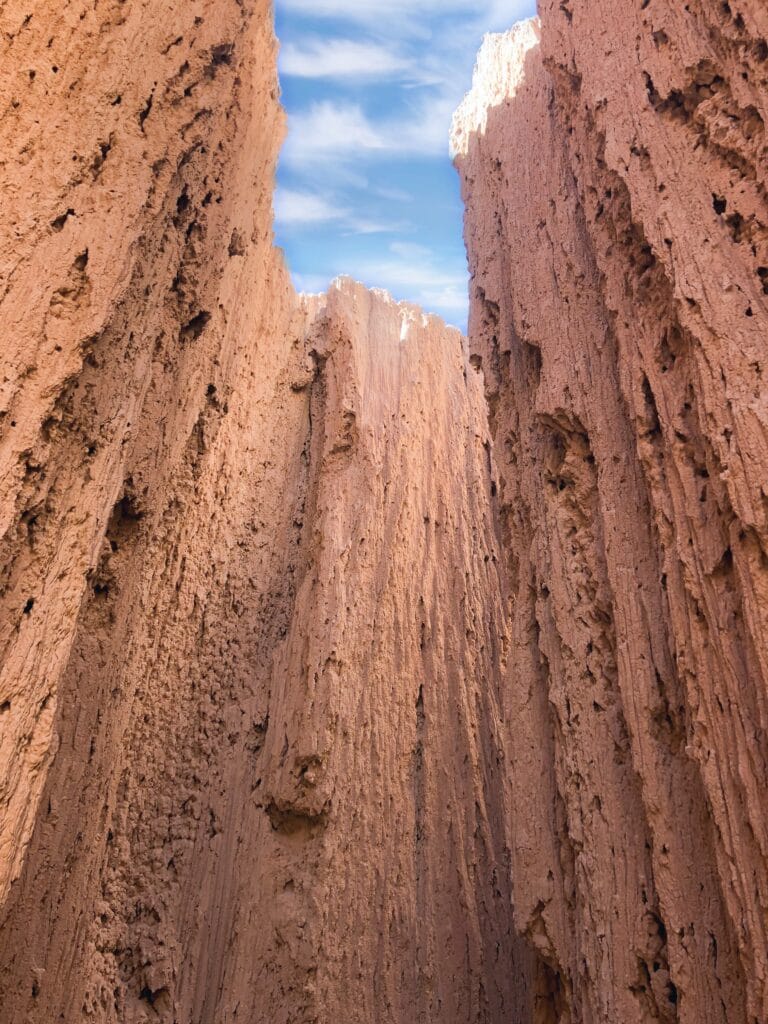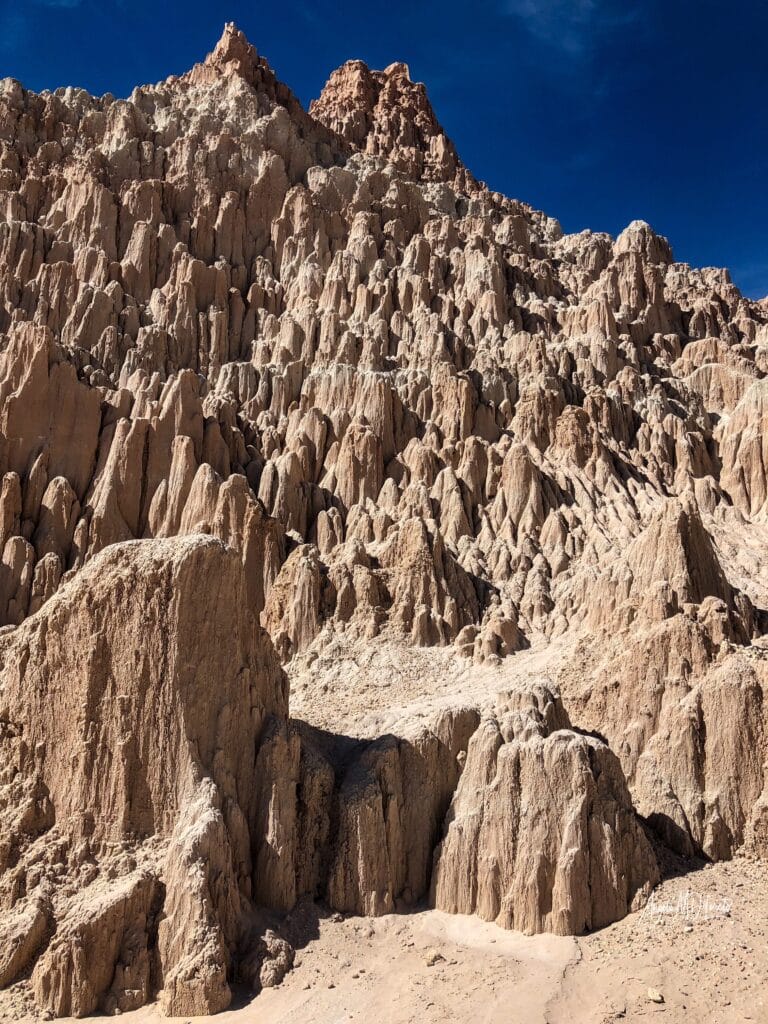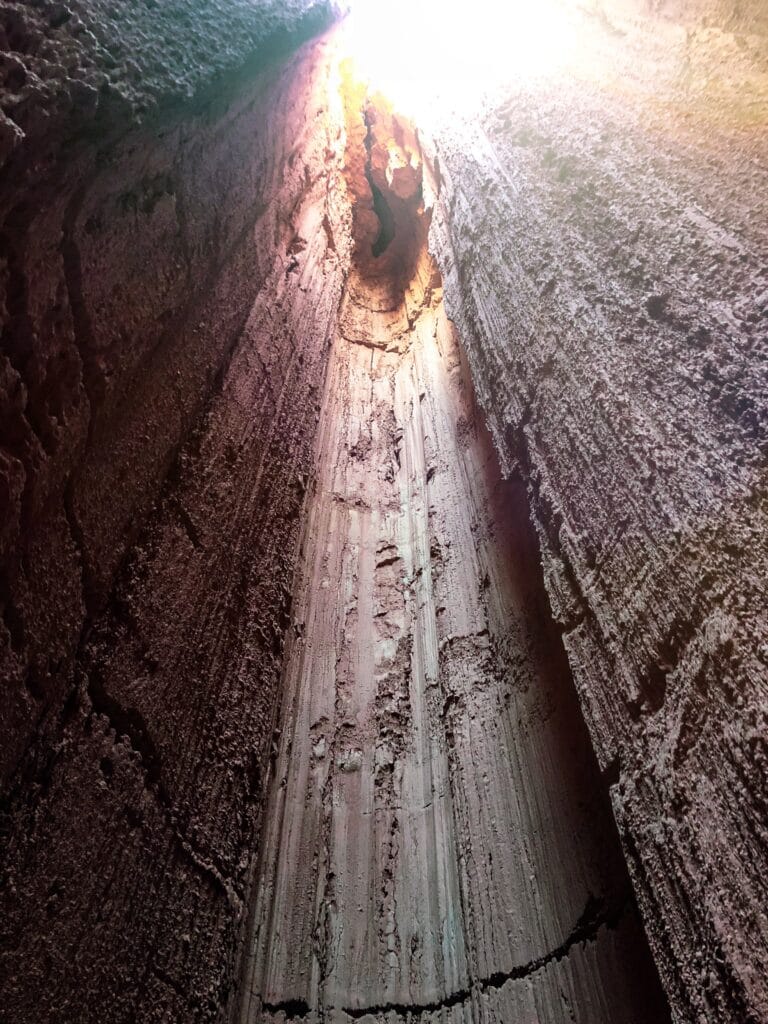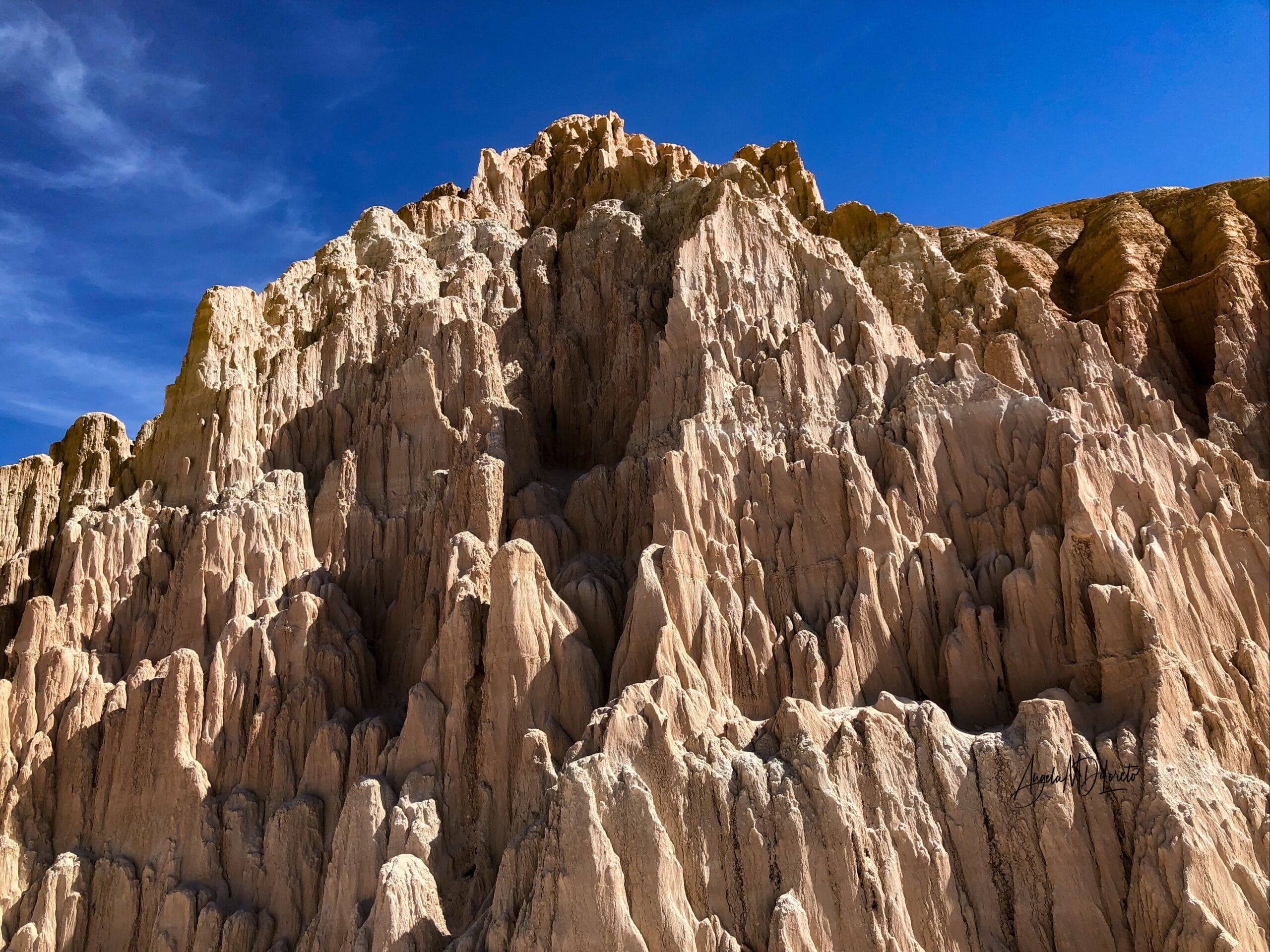
The beautiful Meadow Valley, in Southeastern Nevada, is the result of a very violent beginning. Tens of millions of years ago, explosive volcanic activity deposited layer upon layer of volcanic ash hundreds of feet thick. Those explosions created what we now know as Cathedral Gorge.
Disclosure: Some links on our site are affiliate links. If you purchase a linked item, we will make a commission, at no extra charge to you.
The source of these violent eruptions, the Caliente Caldera Complex, lies just to the north. Five million years later (give or take a few millennia, lol), block faulting occurred. Block faulting is the fracture of the bedrock allowing the two sides to move opposite one another. This process shaped the mountains and valleys of Nevada today. Over time, these depressions filled with water creating a freshwater lake. Continual rain eroded the exposed ash and pumice from the volcanic activity and washed the sediment into the newly formed lake.
Cathedral Gorge is the remnant of that lake. The formations are made of silt, clay, and volcanic ash. The changing landscape and block faulting caused the water to drain, exposing the sediments to wind and rain. Causing the erosion of the soft material called bentonite clay. This erosion occurs at a rapid rate where vegetation cannot grow on the outcropping. These vegetation-free slopes stand in stark contrast to the valley floor. The clay, sand, and gravel washed down into the valley below, creating soil favored by a variety of desert plants. Primrose, narrow-leaf Yucca, Juniper trees, and White Sage are a few you will see.
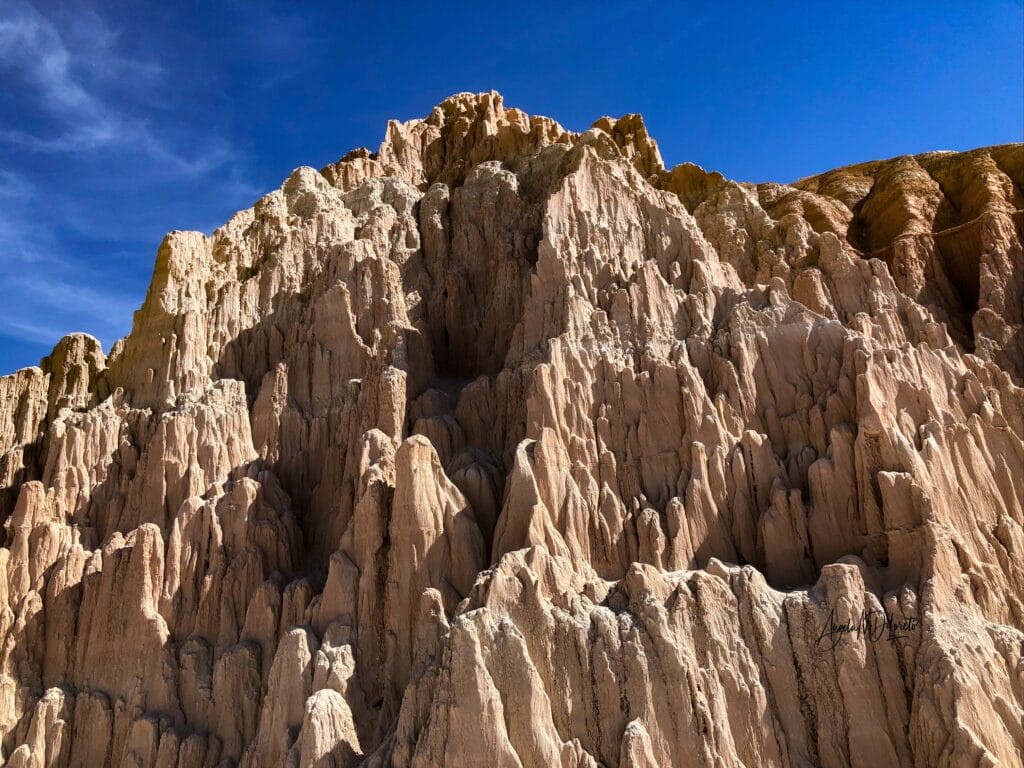
Along the desert floor, you can see dark, bumpy patches around the rocks and other plants. When you see it, be very careful not to damage these areas. This is Cryptobiotic soil and, believe it or not, is alive. This soil is made up of lichens, mosses, algae, microfungi, and bacteria. The crust of this serves as a “glue” helping to stabilize the soil by reducing water and wind erosion. These very fragile microcosms are easily damaged. If disturbed, they can take hundreds of years to recover. So please, if you visit, “Tread Lightly” and “Leave No Trace”.
Once home to Fremont, Anasazi, and Southern Paiute Indians, the area became one of Nevada’s first four State Parks. In 1924, Governor James Scrugham protected the area for preservation. Eleven years later, in 1935, it was named Cathedral Gorge and designated a State Park. Some of the facilities still in use today were constructed by the Civilian Conservation Corp.
Exploring the cave-like formations and cathedral-like spires is awe inspiring. Although, calling them “caves” isn’t truly accurate. The formations are actually slot canyons. A long, narrow, and deep channel eroded into sedimentary rock. They usually have a depth-to-width ratio of 10:1, but can approach 100:1.
The park is a photographer’s dream. With the sunlight beaming off the sandstone and clay. But, my favorite part is to walk into the slot canyons. It’s so quiet that you can just relax. Occasionally, you will hear a bird as it flies overhead, but that’s pretty much it.
